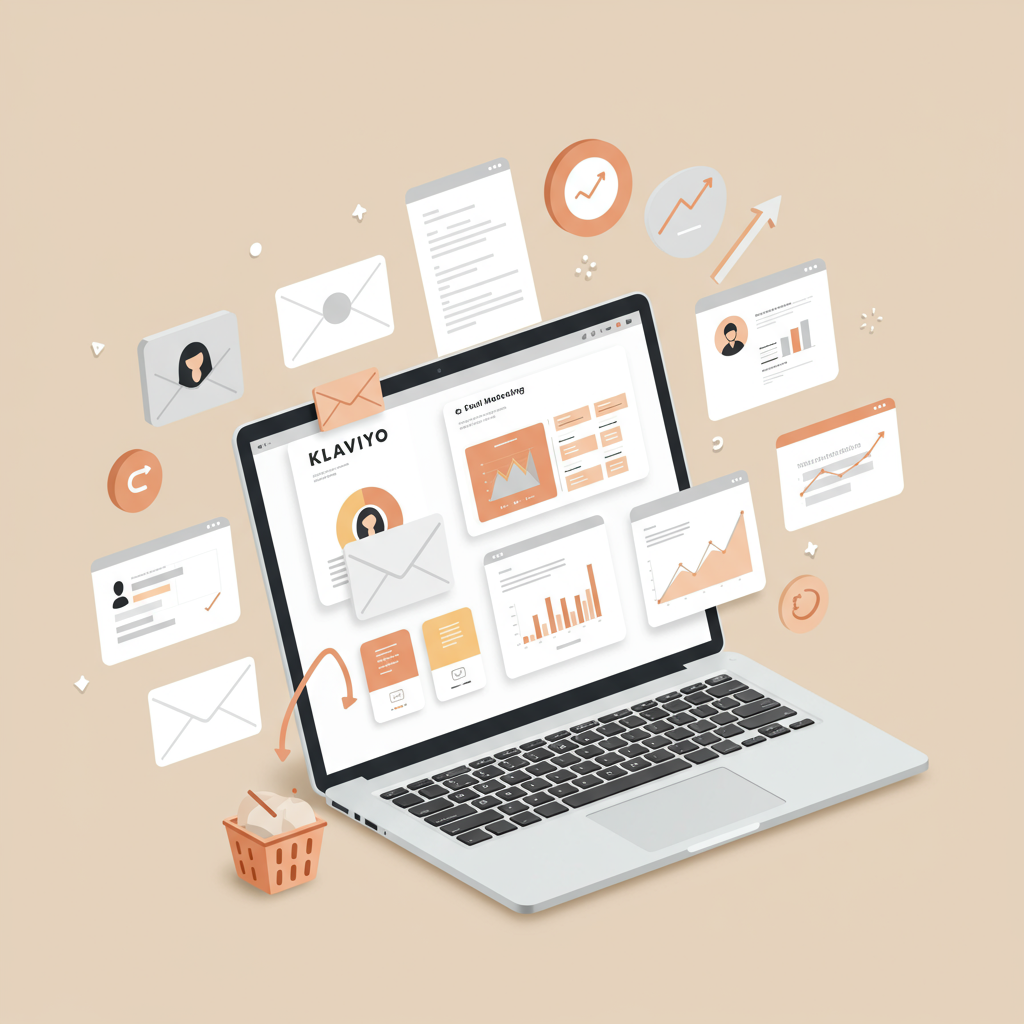Unlock the full potential of your e-commerce store through data-driven automation and personalization.
As a Shopify merchant, I’ve learned that email marketing isn’t just a nice-to-have; it’s an absolute cornerstone of a thriving e-commerce business.
It’s the most direct, cost-effective way to connect with your customers, nurture leads, and drive repeat purchases.
And when it comes to email marketing automation for Shopify, one platform consistently stands out: Klaviyo.
I’ve personally seen the transformative power of Klaviyo in boosting engagement and revenue for my own store, and I want to share how you can leverage it too.
Klaviyo isn’t just another email service provider; it’s a data-driven marketing automation platform built specifically for e-commerce.
Its deep integration with Shopify allows it to pull in all your customer data – purchase history, browsing behavior, abandoned carts – and use it to create highly personalized experiences.
The first step, and thankfully the easiest, is integrating Klaviyo with your Shopify store. This process is incredibly straightforward.
You simply connect your Shopify account within Klaviyo, and it immediately starts syncing all your historical and real-time customer data.
Once connected, the real magic begins with segmentation. This is where you divide your audience into smaller, more targeted groups based on their behavior and characteristics.
For instance, I can create segments for first-time buyers, repeat customers, those who viewed a specific product category, or even customers who haven’t purchased in 90 days.
This granular segmentation allows me to send highly relevant messages, ensuring my emails resonate deeply with each recipient.
Next, we dive into “Flows,” which are automated email sequences triggered by specific customer actions or events. These are the workhorses of your email marketing strategy.
The Welcome Series is perhaps the most crucial flow. When someone signs up for your email list, this automated sequence introduces your brand, shares your story, and often offers a first-purchase discount.
I typically set up a 3-5 email welcome series, gradually building trust and excitement before making a direct sales pitch.
Another indispensable flow is the Abandoned Cart Reminder. Customers often add items to their cart but don’t complete the purchase for various reasons.
Klaviyo automatically detects these abandoned carts and sends timely reminders, often recovering a significant percentage of lost sales. I usually include a small incentive in the second or third email.
Browse Abandonment flows are equally powerful. If a customer views a product multiple times but doesn’t add it to their cart, you can send a gentle reminder with related products or social proof.
Post-Purchase flows are vital for customer retention and loyalty. After a purchase, I send a thank-you email, followed by requests for reviews, cross-sell recommendations, and information about loyalty programs.
I also implement a Win-Back flow for customers who haven’t purchased in a while. This might include a special offer to entice them back or a survey to understand why they’ve been inactive.
Beyond automated flows, Klaviyo also excels at “Campaigns,” which are one-time email blasts for promotions, new product announcements, or seasonal sales.
When sending campaigns, I always leverage Klaviyo’s A/B testing capabilities. This allows me to test different subject lines, email content, or calls to action to see what performs best.
Personalization is at the heart of Klaviyo’s effectiveness. I use dynamic content blocks to display personalized product recommendations based on a customer’s browsing or purchase history.
This level of personalization makes customers feel seen and understood, significantly increasing conversion rates compared to generic emails.
Measuring success is straightforward with Klaviyo’s robust analytics and reporting features. I regularly monitor open rates, click-through rates, conversion rates, and revenue generated by each flow and campaign.
These insights help me continually optimize my strategies. For instance, if a particular email in a flow has a low click-through rate, I know I need to revise its content or call to action.
A few best practices I always adhere to include maintaining a clean email list by regularly suppressing inactive subscribers to improve deliverability.
I also ensure all my emails are mobile-optimized, as a vast majority of my customers check their emails on their phones.
Clear, concise calls to action are paramount. Every email should have a single, obvious next step for the reader.
And, of course, always be mindful of compliance with regulations like GDPR and CCPA when collecting and using customer data.
While this article focuses on email, Klaviyo also offers SMS and push notification capabilities, allowing for a truly omnichannel marketing approach, which I’ve started exploring as well.
In my experience, investing time in setting up and refining your Klaviyo flows and campaigns is one of the highest ROI activities you can undertake for your Shopify store.
It transforms your email marketing from a manual chore into a powerful, automated revenue-generating machine.
The ability to segment, personalize, and automate at scale is what truly sets Klaviyo apart and makes it an indispensable tool for any serious Shopify merchant.
I hope this detailed guide has provided you with a clear roadmap for leveraging Klaviyo to supercharge your Shopify email marketing.
What are your thoughts on using marketing automation for your e-commerce business? I’d love to hear your perspective!






